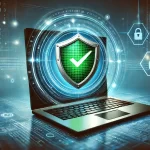A Comprehensive Guide to Protecting Your Data from Emerging Cyber Threats
Introduction
In an era where nearly every aspect of our lives is tied to digital technology, cybersecurity is no longer optional—it’s essential. From personal data breaches to large-scale ransomware attacks, cyber threats have grown in sophistication, exploiting common mistakes that even seasoned users can overlook. With billions of records compromised yearly, the need to safeguard sensitive information has never been more pressing.
This article explores the top five cybersecurity mistakes that leave your data at risk. Whether you’re an individual user or a small business owner, understanding and addressing these vulnerabilities is the key to staying ahead of cybercriminals. Let’s delve into these pitfalls and discover actionable solutions to secure your digital presence.
History and Background
The Evolution of Cybersecurity
Cybersecurity has come a long way since the early days of computing. Initially, security concerns revolved around physical access to hardware. However, the advent of the internet introduced an entirely new landscape of threats. In the 1980s, viruses like the “Brain” virus and the Morris Worm demonstrated the potential of digital threats to disrupt systems.
The 1990s saw the rise of more sophisticated attacks, such as email-based phishing scams. As e-commerce and online banking became mainstream, cybercriminals shifted focus to financial data. The 2000s introduced ransomware, where hackers encrypt user data and demand payment for its release—a tactic that remains prevalent today.
Key Milestones in Cybersecurity Development
- 1993: The first firewall products were launched, providing network-level protection.
- 2004: The rise of antivirus software to combat growing malware threats.
- 2013: The Snowden revelations highlighted the vulnerabilities of mass data collection systems.
- 2021: High-profile ransomware attacks on Colonial Pipeline and JBS Foods underscored the importance of securing critical infrastructure.
Cybersecurity today is an ongoing battle, requiring constant vigilance and adaptation to new challenges.
Core Concepts and Principles
1. Neglecting Software Updates and Patches
Software vulnerabilities are a common entry point for hackers. Unpatched systems expose users to malware, data theft, and system corruption. For example, outdated operating systems often lack critical security features, making them prime targets for cybercriminals.
-
-
- Example: The 2017 WannaCry ransomware attack exploited a known vulnerability in Windows systems, resulting in $4 billion in damages.
-
2. Weak and Reused Passwords
Passwords are the first line of defense against unauthorized access. Weak or reused passwords make it easier for hackers to breach accounts, often using credential stuffing—where stolen credentials from one site are used across others.
3. Lack of Employee Cybersecurity Training
Human error is the weakest link in any security chain. Employees unaware of phishing tactics or proper data handling protocols are more likely to fall victim to scams or leaks.
4. Inadequate Data Backup Practices
Without a robust backup strategy, organizations and individuals risk losing critical data to ransomware or hardware failure.
5. Insufficient Network Security Measures
Unsecured networks, such as public Wi-Fi, are common vulnerabilities. Hackers can intercept unencrypted data, gaining access to sensitive information.
Current Trends and Developments
Increasing Sophistication of Cyber Threats
Modern cyber threats are leveraging artificial intelligence (AI) and machine learning (ML) to automate attacks. For instance, AI-driven phishing campaigns can create highly personalized messages that are harder to detect.
Rise of Remote Work
The shift to remote work has expanded the attack surface for cybercriminals. Unsecured home networks and personal devices often lack the enterprise-grade security measures of office environments.
Zero Trust Architecture
Organizations are increasingly adopting a Zero Trust model, where no user or device is automatically trusted, even within the network. This approach significantly reduces the risk of insider threats and lateral movement by attackers.
Cloud Security Concerns
With businesses migrating to cloud solutions, ensuring data security across shared environments has become a top priority. Misconfigurations and unsecured APIs are common vulnerabilities.
Applications and Implications
Impact on Individuals
For individual users, cybersecurity mistakes can lead to identity theft, financial loss, and compromised privacy. A single data breach can have lasting consequences, such as damaged credit or unauthorized access to personal accounts.
Impact on Small Businesses
Small businesses are prime targets for cyberattacks due to limited security budgets and resources. A single ransomware attack can cripple operations, resulting in financial loss and reputational damage.
Broader Implications
On a larger scale, cyberattacks can disrupt critical infrastructure, compromise national security, and erode public trust in technology.
Challenges and Solutions
Challenge 1: Keeping Software Updated
Many users delay updates due to inconvenience or fear of compatibility issues.
Solution: Automate updates wherever possible. Use tools to monitor patch statuses and schedule updates during non-peak hours to minimize disruption.
Challenge 2: Password Hygiene
Users often struggle to remember multiple complex passwords, leading to reuse or reliance on weak credentials.
Solution: Implement password managers to generate and store unique passwords securely. Use multi-factor authentication (MFA) for additional security.
Challenge 3: Employee Training
Employee resistance or lack of engagement can hinder cybersecurity training programs.
Solution: Make training interactive and relevant. Use simulations to teach employees how to identify phishing attempts and other common threats.
Challenge 4: Data Backup
Many individuals and organizations fail to verify the integrity of their backups.
Solution: Regularly test backup systems to ensure data can be restored quickly. Use a combination of local and cloud-based backups for redundancy.
Challenge 5: Network Security
Unsecured networks remain a significant risk, particularly with the rise of IoT devices.
Solution: Use encryption protocols like WPA3 for home and business networks. Implement firewalls and VPNs to secure remote connections.
Future Prospects
Automation in Cybersecurity
AI and ML are set to revolutionize cybersecurity by enabling real-time threat detection and response. Automated systems can identify anomalies and neutralize threats faster than human intervention.
Quantum Computing
While quantum computing promises breakthroughs in many fields, it also poses challenges to traditional encryption methods. Developing quantum-resistant cryptography will be crucial.
Decentralized Security
Blockchain technology may play a role in creating more secure systems by eliminating single points of failure and providing tamper-proof data storage.
Case Studies and Examples
Case Study 1: Colonial Pipeline Ransomware Attack
In 2021, the Colonial Pipeline attack disrupted fuel supplies across the U.S. The breach occurred due to compromised credentials, highlighting the importance of password security and network segmentation.
Case Study 2: Small Business Phishing Attack
A small e-commerce business fell victim to a phishing scam, resulting in the loss of customer data and a $50,000 ransom demand. This incident underscores the need for employee training and robust email security.
Conclusion
Cybersecurity mistakes are not just technical oversights—they have real-world consequences that can disrupt lives and businesses. By addressing the top five cybersecurity pitfalls—neglecting updates, weak passwords, lack of training, poor backup practices, and unsecured networks—you can build a strong defense against evolving threats.
For personalized cybersecurity solutions and expert advice, visit PC Runs. Stay informed, proactive, and secure in the ever-changing digital landscape.




